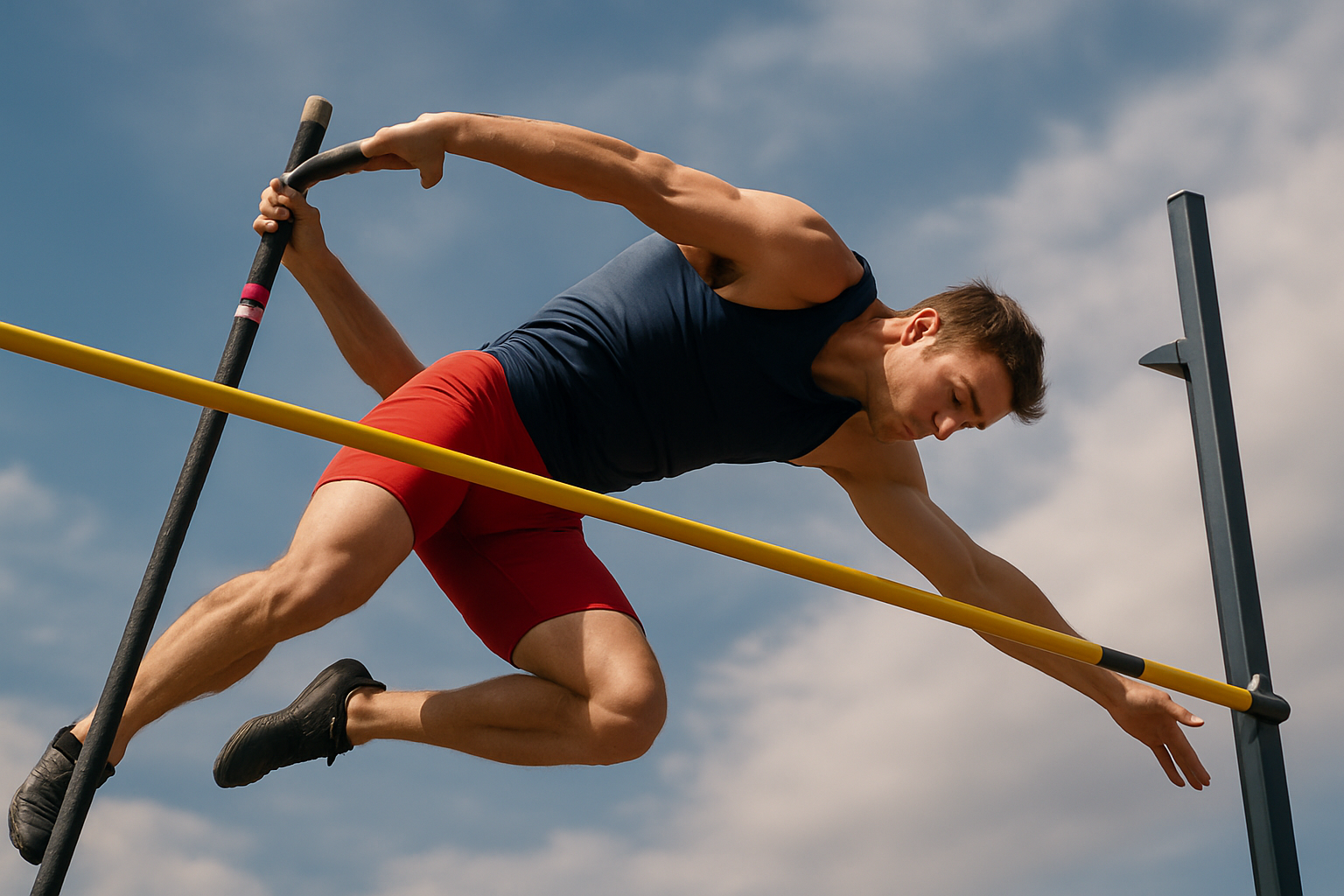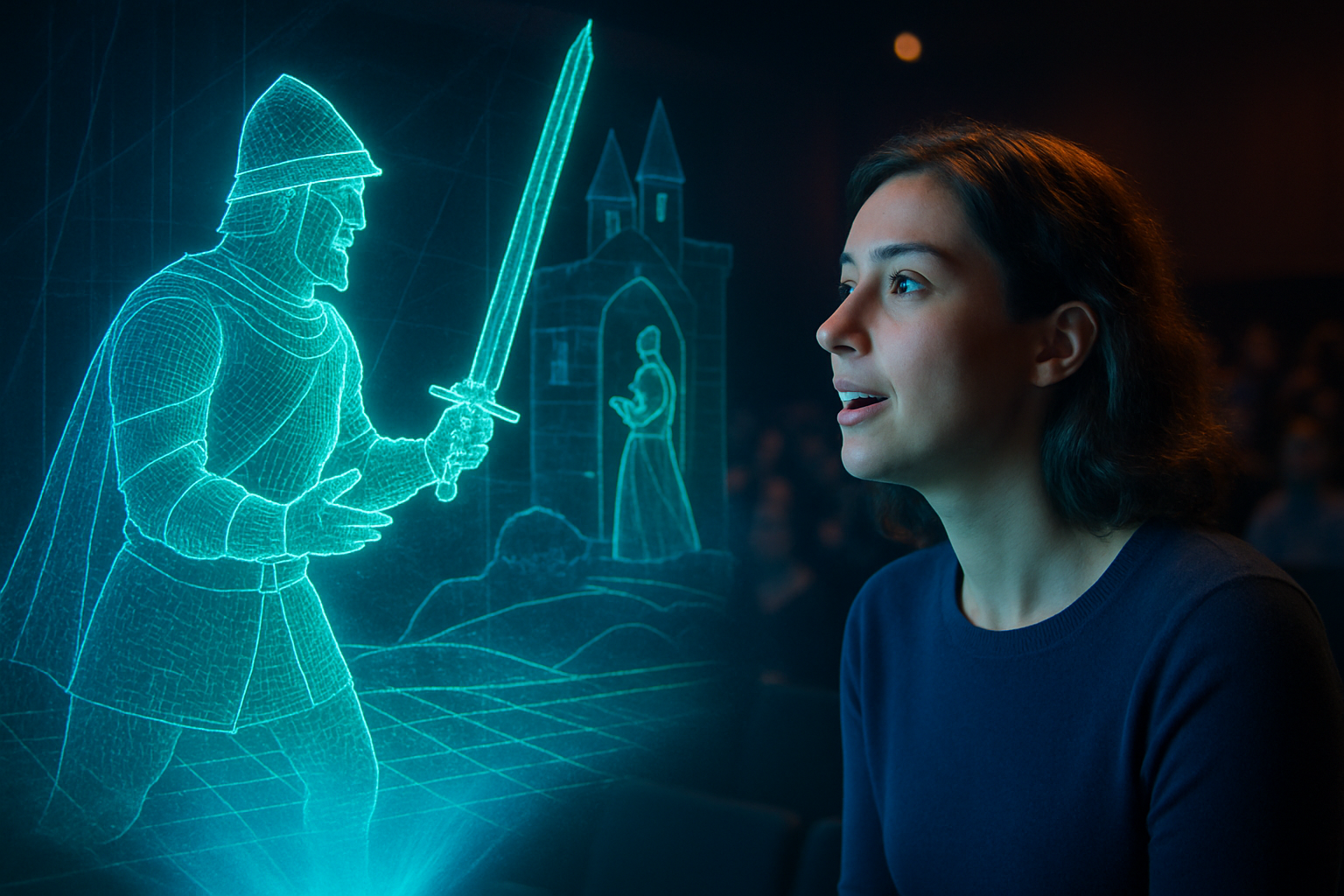Biomechanics of Pole Vaulting: Soaring to New Heights
The graceful arc of a pole vaulter sailing over the bar is a sight that captivates audiences worldwide. Yet, beneath this elegant display lies a complex interplay of physics, biomechanics, and athletic prowess. Pole vaulting, an Olympic sport that challenges athletes to clear a horizontal bar using a flexible pole, has evolved significantly since its inception. This article delves into the intricate biomechanics that power this awe-inspiring event, exploring how athletes harness energy, defy gravity, and push the limits of human performance.

The Physics of the Approach
The pole vault begins long before the athlete leaves the ground. The approach phase is crucial, as it sets the foundation for the entire vault. During this phase, the vaulter builds kinetic energy through acceleration, typically covering a distance of 30 to 45 meters. The goal is to achieve maximum controllable speed at the point of takeoff.
Biomechanically, the approach involves a complex interplay of muscular force production and energy conservation. Vaulters employ a specific running technique that differs from traditional sprinting. They maintain a more upright posture to facilitate pole carriage and prepare for the plant phase. This upright position, while slightly less efficient for pure speed, allows for better control and positioning of the pole.
The approach speed directly correlates with the potential height of the vault. Research has shown that for every 0.1 second decrease in 100-meter sprint time, a vaulter can potentially clear an additional 10 centimeters in height. However, speed alone is not sufficient; the ability to convert this horizontal velocity into vertical lift is paramount.
The Critical Moment of Pole Plant
The pole plant is perhaps the most technically demanding aspect of pole vaulting. As the athlete approaches the box, they must seamlessly transition from horizontal speed to vertical lift while transferring their kinetic energy into the pole. This phase requires impeccable timing and body positioning.
During the plant, the vaulter’s body acts as a lever, with the pole serving as the fulcrum. The athlete must position the pole at the optimal angle – typically between 30 and 45 degrees – to maximize energy transfer. Too steep an angle results in excessive braking forces, while too shallow an angle fails to generate sufficient lift.
The biomechanics of the plant involve a rapid deceleration of the lower body while the upper body continues to move forward. This creates a whip-like effect, bending the pole and storing elastic energy. The muscles of the shoulders, arms, and core work in concert to control this bending process, with elite vaulters capable of generating forces exceeding 4.5 times their body weight during the plant phase.
Harnessing Elastic Energy in the Pole
The flexibility of the pole is central to the mechanics of pole vaulting. Modern poles, typically made from fiberglass or carbon fiber, are engineered to bend significantly under load and then rapidly return to their original shape. This property allows the pole to act as an elastic energy storage device.
As the vaulter’s kinetic energy is transferred into the pole during the plant and takeoff phases, the pole bends, storing this energy as elastic potential energy. The degree of bend, known as the pole’s “flex number,” is carefully matched to the vaulter’s weight and approach speed. A stiffer pole requires more force to bend but can potentially generate more upward thrust.
The energy stored in the pole is not released instantaneously but rather in a controlled manner as the vaulter executes the swing and extension phases. This gradual release of energy allows the athlete to maintain contact with the pole longer, maximizing the height gained. Studies have shown that elite vaulters can convert up to 60% of their approach kinetic energy into vertical lift through this elastic energy storage and release mechanism.
The Swing and Extension: A Balancing Act
As the pole begins to recoil, the vaulter enters the swing phase. This is where the athlete’s gymnastic abilities come into play. The goal is to create a pendulum-like motion, swinging the legs upward while keeping the arms straight to maintain maximum pole compression.
Biomechanically, the swing involves a complex sequence of muscle activations. The hip flexors initiate the upward leg movement, followed by engagement of the abdominal muscles to lift the hips. As the body inverts, the back muscles contract to maintain an arched position. This sequence creates a “rock-back” effect, further bending the pole and storing additional energy.
The extension phase follows, where the vaulter straightens their body along the axis of the pole. Timing is critical here – premature extension results in lost height, while late extension can cause the vaulter to fall back onto the bar. Elite vaulters exhibit a remarkable ability to sense the pole’s recoil and time their extension accordingly.
During extension, the vaulter’s body acts as a second lever, with the hands serving as the fulcrum. By pushing against the pole and simultaneously extending the body, the athlete can generate additional upward velocity. Research has shown that this pushing action can contribute up to 20% of the total vertical velocity at pole release.
The Final Push: Clearing the Bar
The moment of truth in pole vaulting comes as the athlete releases the pole and attempts to clear the bar. This phase, known as the fly-away, requires precise body control and spatial awareness. The vaulter must transition from a vertical ascent to a horizontal position to clear the bar efficiently.
Biomechanically, the fly-away involves a rapid rotation of the body. As the vaulter releases the pole, they push off with their top hand, initiating a twisting motion. This twist, combined with the upward momentum, allows the athlete to align their body parallel to the bar. Elite vaulters often exhibit a characteristic “layout” position, with their back arched and arms outstretched.
The clearance technique has evolved over time, with most modern vaulters employing some variation of the Petrov/Bubka technique, named after the legendary vaulter Sergey Bubka and his coach Vitaly Petrov. This technique emphasizes a high grip on the pole and a powerful swing to achieve maximum height.
Research into the biomechanics of bar clearance has revealed that the highest point of the vaulter’s center of mass occurs approximately 0.3 to 0.5 seconds after pole release. This means that the athlete must time their push-off to coincide with this peak height, requiring exceptional proprioception and body awareness.
Injury Prevention and Biomechanical Considerations
While pole vaulting is a thrilling sport, it also carries inherent risks. Understanding the biomechanics of vaulting is crucial not only for performance enhancement but also for injury prevention. The high forces involved in pole vaulting can place significant stress on the athlete’s body, particularly the upper extremities and spine.
During the plant phase, vaulters experience peak forces of up to 7.5 times their body weight through their shoulders and arms. This can lead to a variety of injuries, including shoulder dislocations, elbow tendinopathies, and wrist sprains. To mitigate these risks, vaulters engage in extensive strength training focused on the upper body and core.
The spine is also subjected to considerable stress, particularly during the swing and extension phases. The extreme hyperextension required can lead to lower back injuries if proper technique and conditioning are not maintained. Coaches and athletes must carefully balance the desire for performance with the need for long-term physical health.
Biomechanical analysis has led to improvements in equipment design and training methodologies. For example, the development of softer landing pits has significantly reduced the risk of serious injuries from falls. Additionally, video analysis and motion capture technology allow coaches to fine-tune an athlete’s technique, optimizing performance while minimizing injury risk.
The Role of Genetics and Anthropometry
While technique and training are crucial, the biomechanics of pole vaulting also highlight the importance of physical attributes. Certain anthropometric characteristics can provide natural advantages in the sport. Height, for instance, allows for a higher grip on the pole, potentially increasing the maximum achievable vault height.
Arm span relative to height, known as the “ape index,” is another important factor. Vaulters with longer arms can grip the pole higher and generate more leverage during the swing and extension phases. Studies have shown that elite male pole vaulters tend to have an ape index greater than 1.0, meaning their arm span exceeds their height.
Body composition also plays a role, with a high strength-to-weight ratio being advantageous. Vaulters typically have a lean build with well-developed upper body musculature. This allows them to generate the necessary force to bend the pole while minimizing the weight they must lift during the vault.
However, it’s important to note that while certain physical attributes may provide advantages, they are not determinative. The history of pole vaulting is replete with athletes who have overcome perceived physical limitations through superior technique and training.
Technological Advancements and Future Directions
The evolution of pole vaulting biomechanics has been closely tied to technological advancements. The transition from rigid poles to flexible fiberglass and carbon fiber poles in the 1960s revolutionized the sport, allowing for much higher vaults. Today, pole technology continues to advance, with manufacturers fine-tuning the materials and design to optimize energy storage and release.
Wearable technology is also making inroads in pole vaulting. Sensors embedded in clothing or attached to the pole can provide real-time data on an athlete’s speed, angle of takeoff, and pole bend. This information allows for more precise technique refinement and personalized training programs.
Virtual reality and augmented reality systems are being explored as training tools, allowing vaulters to practice their technique in a safe, controlled environment. These systems can simulate different wind conditions, runway surfaces, and bar heights, providing valuable experience without the physical toll of repeated vaults.
Looking to the future, biomechanists and engineers are exploring the potential for “smart” poles that could adjust their stiffness mid-vault based on the athlete’s performance. While such technology is still in its infancy, it highlights the ongoing interplay between biomechanical understanding and technological innovation in pushing the boundaries of human performance.
The Psychological Component of Biomechanical Execution
While much of pole vaulting biomechanics focuses on the physical aspects of the sport, the psychological component plays a crucial role in successful execution. The ability to consistently perform complex motor patterns under pressure requires exceptional mental fortitude and focus.
Research in sports psychology has shown that mental rehearsal and visualization techniques can improve biomechanical execution in pole vaulting. By mentally practicing the vault, athletes can reinforce neural pathways associated with proper technique, leading to more consistent performance.
The concept of “flow state” – a mental state of complete absorption in the task at hand – is particularly relevant to pole vaulting. Achieving flow can allow vaulters to execute their biomechanical sequence with minimal conscious thought, relying instead on well-honed muscle memory and instinct.
Cognitive strategies also play a role in managing the fear inherent in launching oneself several meters into the air. Techniques such as positive self-talk and arousal regulation can help vaulters maintain optimal levels of activation, ensuring that biomechanical execution is not compromised by excessive anxiety or hesitation.
Biomechanical Differences in Female Pole Vaulters
While the fundamental biomechanics of pole vaulting are similar for both male and female athletes, there are some notable differences that reflect physiological and anthropometric variations between the sexes. Understanding these differences is crucial for coaches and athletes in optimizing performance and training strategies.
One significant difference lies in the approach speed. On average, elite female vaulters have a slower approach speed compared to their male counterparts. This is partly due to physiological differences in muscle composition and power output. As a result, women’s poles are typically more flexible, allowing for greater bend with less initial force.
The swing and extension phases also show some biomechanical variations. Female vaulters often exhibit a more pronounced “rock back” during the swing, which helps compensate for the lower initial velocity. This technique allows them to load more energy into the pole, maximizing the potential height of the vault.
In terms of anthropometry, elite female vaulters tend to have a higher strength-to-weight ratio in the upper body compared to the average female population. This adaptation is crucial for generating the necessary force to bend the pole effectively. Training programs for female vaulters often place a greater emphasis on upper body and core strength development to optimize these biomechanical advantages.
Research has also shown that female vaulters may have a slight advantage in terms of flexibility, particularly in the hip and shoulder regions. This increased range of motion can be beneficial during the swing and fly-away phases, allowing for more efficient body positioning and bar clearance.
The Impact of Environmental Factors on Vaulting Biomechanics
While the basic biomechanics of pole vaulting remain constant, environmental factors can significantly influence performance and technique. Understanding and adapting to these factors is crucial for consistent high-level vaulting.
Wind conditions, in particular, can have a profound effect on vaulting biomechanics. A tailwind can increase approach speed, potentially leading to higher vaults but also requiring adjustments in pole selection and planting technique. Conversely, a headwind necessitates a more powerful approach and may alter the optimal takeoff point.
Temperature and humidity also play roles in pole vaulting biomechanics. Higher temperatures can make the pole more flexible, potentially increasing the bend but also changing its recoil characteristics. Humidity can affect grip, requiring athletes to adjust their hand placement or use more chalk to maintain control during the vault.
The runway surface itself is another critical factor. Different surfaces can alter the athlete’s stride length and frequency during the approach, affecting the timing of the plant and takeoff. Elite vaulters often practice on various surfaces to develop adaptability in their biomechanical execution.
Altitude is yet another consideration, particularly in high-level competitions. The reduced air density at higher altitudes can lead to faster approach speeds and potentially higher vaults. However, it also affects the aerodynamics of the fly-away phase, requiring subtle adjustments in technique.
Integrating Biomechanics into Training and Coaching
The deep understanding of pole vaulting biomechanics has revolutionized training and coaching methodologies in the sport. Modern training programs are highly specialized, targeting specific phases of the vault and the muscle groups involved in each.
Plyometric exercises, for example, are widely used to develop the explosive power needed for the takeoff and swing phases. These exercises mimic the rapid stretch-shortening cycle experienced during the vault, improving the athlete’s ability to generate and transfer force quickly.
Strength training focuses not only on building raw power but also on developing the specific strength patterns required for vaulting. Exercises like the clean and jerk are popular among vaulters as they simulate the explosive hip extension crucial for a powerful takeoff.
Flexibility and mobility work are also integral to vaulting success. Dynamic stretching routines target the shoulders, hips, and spine, allowing for greater range of motion during the swing and fly-away phases. Yoga and Pilates have been incorporated into many vaulters’ training regimens to improve body awareness and control.
Video analysis has become an indispensable tool in biomechanical training. High-speed cameras allow coaches and athletes to break down each phase of the vault in minute detail, identifying areas for technical improvement. Some training facilities now use 3D motion capture technology to create detailed biomechanical models of an athlete’s vault, providing unprecedented insights into technique optimization.
The Future of Pole Vaulting Biomechanics
As our understanding of human biomechanics and materials science continues to advance, the future of pole vaulting looks exciting. Researchers are exploring new pole materials that could provide even greater energy return, potentially leading to new height records.
Biomechanical modeling is becoming increasingly sophisticated, allowing for predictive analysis of technique modifications. This could lead to more personalized coaching, with training programs tailored to an individual’s unique biomechanical profile.
The integration of artificial intelligence and machine learning into biomechanical analysis is another promising frontier. These technologies could process vast amounts of performance data to identify subtle technique optimizations that might elude human observers.
Genetic research may also play a role in the future of pole vaulting. While ethical considerations must be carefully navigated, advances in our understanding of the genetic factors influencing attributes like fast-twitch muscle fiber composition and connective tissue elasticity could inform talent identification and personalized training strategies.
As pole vaulting continues to evolve, the interplay between biomechanical understanding, technological innovation, and athletic prowess will undoubtedly push the boundaries of human performance. The graceful arc of a pole vaulter clearing the bar will remain a testament to the remarkable capabilities of the human body and the relentless pursuit of excellence in sport.





